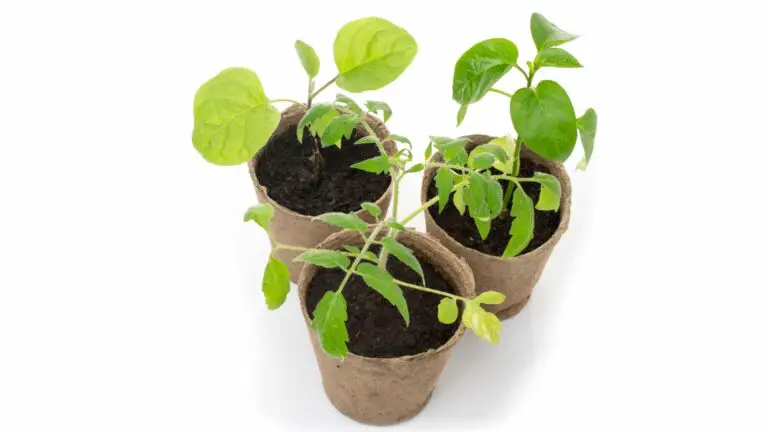6 Easy Steps to Prevent Algae Growth In Rockwool
Disclosure: Your purchases through our links may earn us a small commission, supporting our site’s ability to provide valuable information to our readers. Rest assured, it won’t impact your price. Thank you for your support.
Your hydroponic setup is running fine. As time passes, you notice green stuff building up wherever the nutrient solution touches. You ignore it first. But your plants start to show symptoms. The pH of the nutrient solution changes very often.
This is algae! And algae makes hydroponics hard.
Algae is a type of aquatic organism that can photosynthesize. There are several types, some of which can grow like large seaweed. Yet, as hydroponic growers, we are not concerned about the big ones.
Algae are a critical food source for many aquatic life. They can be found anywhere in the world and tolerate harsh conditions. Thus, it’s hard to clean algae 100% from the water.
When you expose the water to the sun long enough, the surviving algae can start photosynthesis and replicate faster. Soon, you can see a patch of them in the container.
I’ve compiled this guide to help you deal with algae in a hydroponic system with any medium and use Rockwool effectively in algae prevention.
How to Keep Your Hydroponic System Algae-Free With Rockwool or Any Other Options?
The six easy steps involved in preventing Rockwool algae are as follows:
- Keep the pH of your system in check:
Algae thrive at pH levels outside the optimal range for hydroponic plants. Maintaining a stable pH level will help to keep algae growth under control. Learn more about how to keep the pH level of Each Hydroponic Growing Medium.
- Use an algaecide:
Many different types of algaecides are on the market, and you’ll likely have to try several before finding one that works. For example, you can use hydrogen peroxide. Hydrogen peroxide is an effective way to kill algae growth in hydroponic systems. Add a few drops to your water, which will solve the problem.
- Change your hydroponic nutrients:
If changing the pH and using an algaecide doesn’t work, it might be time to change the hydroponic nutrient solution completely. The algae may have developed a resistance to your current hydroponic nutrients. Make sure to use hydroponic nutrients that do not contain any phosphorous. For example, you can use hydroponic nutrients explicitly made for algae control. You can still search on Amazon for such nutrients.
- Clean your hydroponic system regularly:
This is probably the most crucial step in preventing algae growth in Rockwool. Regularly rinsing and cleaning your hydroponic system will help remove any algae that might be present. Therefore, change your water regularly and use a filter to keep it clean. - Use a hydroponic light blocker:
If all else fails, you can use a hydroponic light blocker to help keep the light from hitting your hydroponic system. Algae need light to grow, so reducing the light that hits your hydroponic system will help control algae growth. - Keep the temperature down:
Algae are less likely to grow in cold water, so keep your hydroponics system away from heat sources if possible.

If you are looking to buy testers for your hydroponic garden check this product 3-in-1 TDS Temperature & EC Meter, Digital Water Tester, Ultrahigh Accuracy Water Quality Tester for Hydroponics to keep monitoring your garden.
Also, read:
How to Measure EC, pH, DO and Temperature in a Hydroponic System
How to Set Up a Nutrient Film Technique – NFT Hydroponics?
How Effective Is the Rockwool in Algae Prevention?
Rockwool is hydrophilic, which means it can hold and distribute water, and it also suppresses the development of molds and bacteria due to its ability to keep moisture in.
It also has a neutral pH, while most hydroponic media has a pH level that’s either too acidic or too alkaline. This property is advantageous for hydroponically growing plants to suppress algae and mold growth.
Rockwool is often made from basalt rock, but it can also be made from volcanic ash, slag wool, or even recycled glass. When rock wool is heated to high temperatures, it’s spun into fibers used in hydroponic systems.
Rockwool is a great hydroponic media to use for both small and large hydroponic systems, and it can use to grow a wide variety of plants. It’s also very economical and easy to use. So, if you’re looking for hydroponic media with many benefits, hydroponics Rockwool is the way to go.
In Summary
In summary- Rockwool suppresses algae growth and has many other advantages over hydroponic mediums. It’s hydrophilic, which means it holds moisture well and has a neutral pH level compared to most hydroponics.
However, algae is a hydroponic problem that can solve with six easy steps explained above. You should keep your water clean, use hydroponics nutrients without phosphorous, control the light intensity in your hydroponic system by reducing it or using LED lights to avoid algae growth- and if you’re still having an issue, try adding hydrogen peroxide to kill any remaining algae.
Managing algae will no longer be a concern for you with these tips in mind!
Thank you for reading!
Also, read:
The Weed in Hydroponic: 3 ways to avoid it
How to Grow Kratky Method Plants: A Passive Hydroponic System





